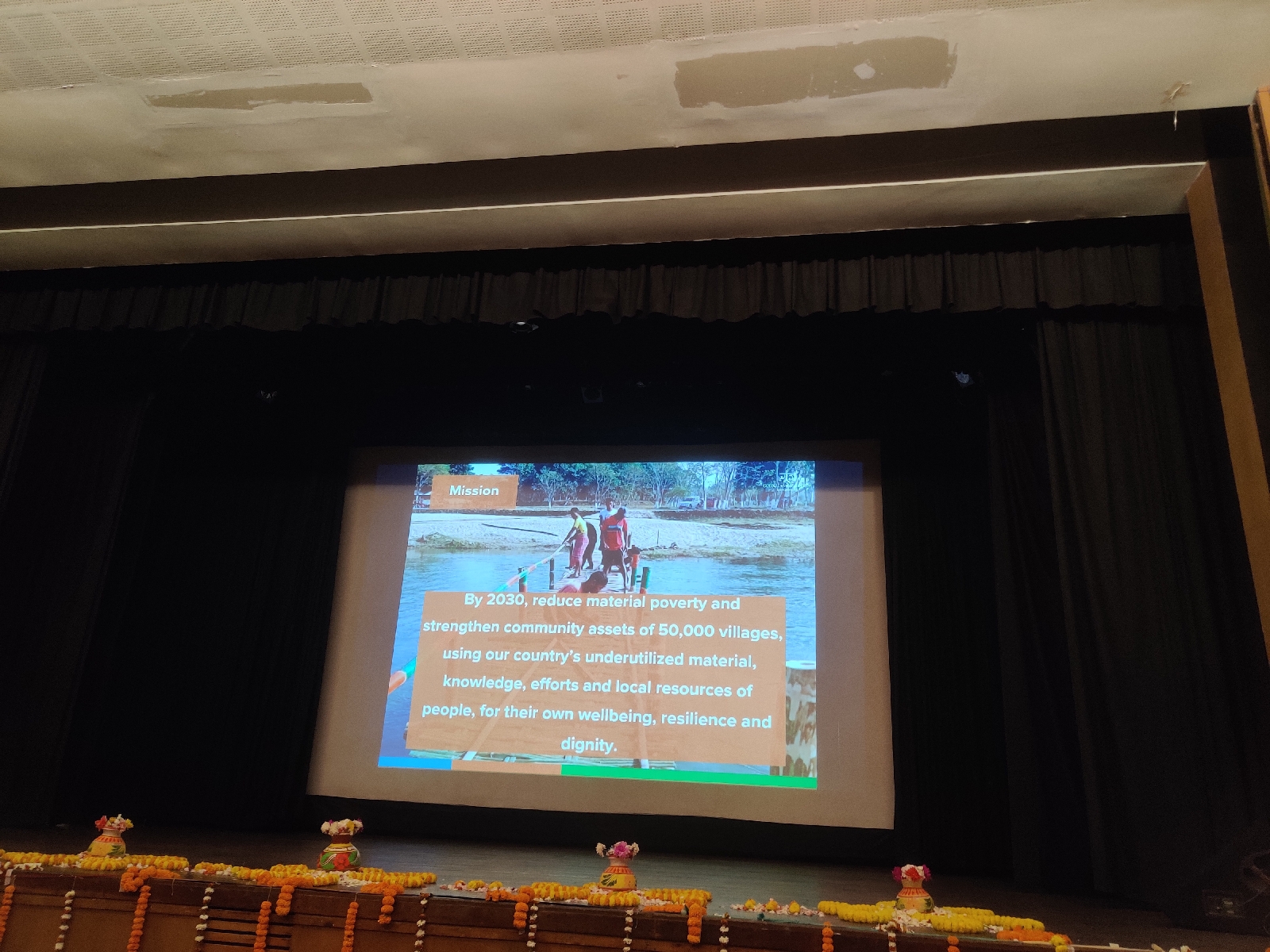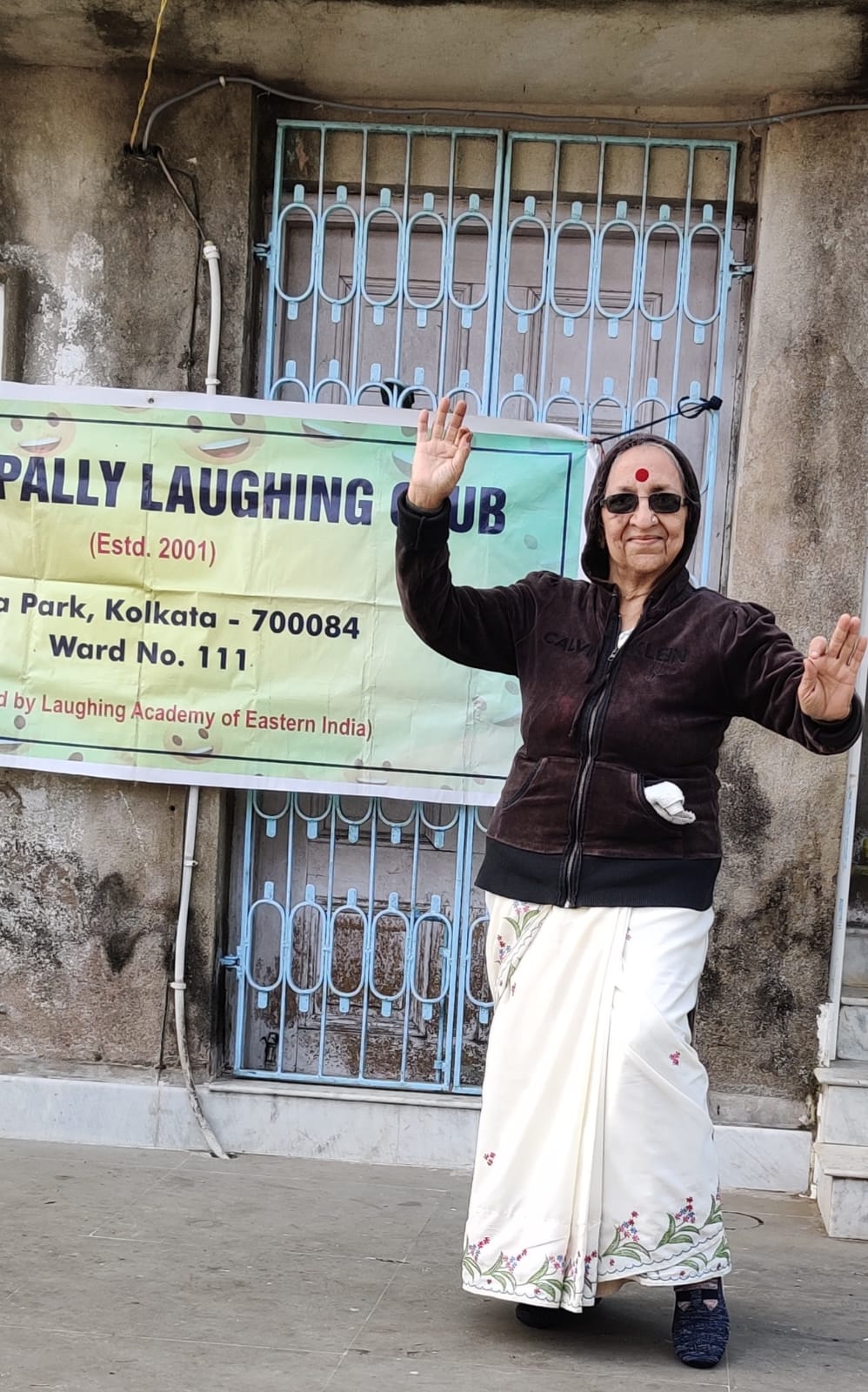Friday, 9 May 2025
The man and his mind
Saturday, 5 April 2025
Don't help, but support!
I am only one, but I am one. I cannot do everything, but I can do something. And I will not let what I cannot do interfere with what I can do.
Edward Everett Hale
Why a non-governmental organization (NGO) called Goonj would call an annual Chaupal was intriguing. Recently, in Kolkata, I, Sudeshna Chatterjee, attended the event which opened up a Pandora’s Box as it exposes the hollowness of some stakeholders.
Goonj works across the country as a disaster relief and rural development organization. There is a Harvard Business case study on it. What I personally find uplifting is that it abhor the word ‘donor’. The NGO considers itself as a stakeholder in empowering communities and amplifying the voices of the marginalized. As it rightly points out, there is a difference between help and support.
Here are some reality checks which by its definition are not always palatable. It is 'we' vs 'they' to start with.
People usually give out what they don’t want. They would not bother to find out what is required. The thought and word, ‘donation’, demeans dignity that everyone is born with. Rather, they could have been a catalyst to any form of developmental work to make an individual, school or community self-sufficient. For example, it could be guidance to become a small scale entrepreneur, creation of a playground or revival/ management of a waterbody. Large part of India still has good source of water. What is lacking is water management.
Just like landfills are dumped with garbage, to some, unfortunately, it seems the NGOs are similar equivalents. I learnt stained pads, torn and unwashed clothes are also ‘donated’. They don’t have any qualms about giving unwashed trousers that don’t have zips or pajamas that don’t have drawstrings.
There were misdirected advertisements pronouncing using cloth during menstruation as unhygienic. But even clothes can be made hygienic for the usage, that they don’t say, instead urging the target audience to buy more expensive branded pads. Goonj, for example makes much cheaper and hygienic cloth pads. It can be bought and given to needy. Or, donate clothes to enable them to make some more.
Empathy should not be misplaced. For the same sexual abuse, why a culprit of a homosexual victim is sentenced for six months to two years whereas the sentence becomes seven to fourteen years when the victim is heterosexual?
I have come across prominent reports of certain communities not getting rents in his/her chosen place. But where do you see LGBTQ people suffering from similar predicaments?
One transgender spoke of the absence of a neutral washroom. All the lavatories are marked either 'Gents' or 'Ladies'. Hence at public places, he has to resist the urge enough to develop kidney stones!!
Villagers may not always be as educated as their urban counterparts, but they are street smart and the grassroots wisdom often works.
Also, for women, going by some Goonj female staffers, a village is safer than a city.
Inspired to join? You don't need to be a MSW (Master in Social Work) to join an NGO. Engineers and MBAs (Master in Business Administration) also work at Goonj.
How many of us think laterally? For example, now that Covid thankfully is a past, there are many unused oxygen concentrators across hospitals and even at many homes. These could still be much help to people with severe breathing problems. Laundry bags at hotels and car seat covers could also be used for various requirements.
Chaupal etymologically means a space to converse and connect in a rural set-up where the people are essentially male. Happily, I saw a liberalized version of that concept in a city cultural centre at Kolkata where a large number of the audience were women. They were students, volunteers and well-wishers. In fact, Goonj itself has almost 76 percent of women force. It was a day full of real-life stories, concerns and conversations, projects and possibilities, disaster photographs decoding harsh truths with dry humour, a few counters of Goonj products for sale and a good lunch.
When the light shifts, things look different. Thank you Goonj, for hosting this platform and challenging our preconceived notions.
#Goonj #Chaupal #LGBTQ #Transgender #SudeshnaChatterjee #Covid
Saturday, 8 March 2025
Breaking Boundaries
A woman is like a tea bag - you never know how strong she is until she gets in hot water. There is nothing she cannot achieve. She is a celebration of life. She dreams, and she conquers because girls with dreams become women with vision.
Eleanor Roosevelt

Sarika Halder
Remember the Billy Ocean song: When the going gets tough, the tough get going. And if it is with a hearty laugh, the journey becomes heartening. I met such a toughie in the fag end of January, this year, while hiring an Uber cab in Kolkata. From behind the wheel, she gave me a shy smile, trying to anticipate my reaction. I was pleasantly surprised and the next 45 minutes ride was wrapped in conversations that made me feel good for this year’s International Women’s Day pledge for an inclusive, fair and empowered society.
Meet Sarika Halder, 32, my cabbie that afternoon. She was driving confidently. We spoke mostly when the car was stuck in a traffic jam. She had to live separately from her husband because of her problems with her in-laws. Her husband was not ready to shift with her. She did not insist either. Over two years now, she has been living with her nine-year-old daughter and mother. Earlier, she had been working as a nanny for infants. But she was not a celebrity nanny. Looking for this job every second year with decent salary could be difficult, she thought. So, for a work profile with more openings, she started learning to drive, thanks to her friend who connected her with a non-governmental organization(NGO). For eight consecutive months, she would learn driving during day time and work as a nanny at night.
With the hard work she had invested, she passed her driving test as well as saved some money. Along with a bank loan, she bought base model of a Wagon R, costing Rs 5.9 lakhs. She knew the risk of taking a loan, but she was determined to draw a better curve for herself and her dependents. She is required to pay Rs 10,000 per month for four years to repay her loan. She is so fiercely independent that she is paying back her husband in instalments, a sum of Rs 2000 that she took as a loan from him. In some time, she plans to learn driving tempo and bus. She also aims to complete her matriculation. She has studied till class VIII.
She has been driving since the last six months. She takes a hearty breakfast in the morning and drives the whole day till 11 pm at night, almost on empty stomach. Just a cup of tea and biscuits and that too only twice a day. She avoids eating from outside. When asked about her experience, "no untoward incident. Not even, when the passenger in the front seat is a male”, she had said. She was all praise for Uber, police, male cabbies and passengers in that order. Because, while some passengers are nice, some are not so nice. Few are plain rude. They would either disconnect when she replied to a booking call or cancel the ride when they discovered her behind the wheel. But she was dismissive about such irreverent attitude.
Ditto with a meter reader who visited my premise yesterday. Since she did not want to be identified, I will go by her pet name, Pratima K. Mine comes under the ambit of Calcutta Electric Supply Corporation or CESC. When I asked her about her experience, she was candid. "Nothing negative to cry over. Yes, few residents were condescending. They were rather shocked to see me when I rang the bell for the first time, doubting my capability". But like Halder, she was nonchalant.
Beauty, I learn, is no longer skin-deep. Rather, it is quality conscious. In the process, what evolved is grit. That is why, when I met 78-year-old widow and a grand mother, Bulbul Bose, I was mesmerised by her spirit. A music teacher and kirtankar by profession, she loves to dance and can gyrate to all the Helen numbers for over an hour at a stretch!!
Bulbul Bose
I find their courage infectious, especially in today's time when the scope and depth of abusive behaviours have expanded. They may or may not always get the support of the company they work for. But, they no longer dither to walk that extra mile to earn their place with dignity. And it can be any city. With the celebration of 'Feminism' today, thanks to all the media paraphernalia and advertising blitzkrieg for an 'Equal Tomorrow', it is women like Sarika Halder, Bulbul Bose and Pratima K who take up the baton. Especially, when you see how they take on key challenges and grab emerging opportunities in a cut-throat market place, you know, women are no longer 'second sex'. In fact, today, notwithstanding the patriarchal symbols in rituals and male gaze, women of any age show the zest to live life on their own terms.
Better still, they are no longer few in number and limited in certain brackets. They are ambitious, confident, gentle, cheerful and go-getter. They live by choice and shun compulsion. This is the India I am comfortable and proud about.
Happy Women's Day!!
#EleanorRoosevelt #Feminism #CESC #BillyOcean #SudeshnaChatterjee #malegaze #Uber #EqualTomorrow





